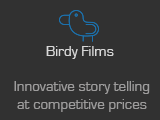The CBI described the Budget as double-edged for business and branded the Chancellor’s flagship introduction of a National Living Wage of £7.20 next April as “a big gamble”.
It also called the apprentice levy “a blunt tool” to force more businesses to take on trainees.
Director-general John Cridland said: “Firms will welcome measures to balance the books and boost investment, but they will be concerned by legislating for wage increases they may not be able to deliver.
“Firms have been unwavering in their support for the Chancellor’s deficit reduction plans and will welcome the clarity that the new fiscal rules provide. Other standout measures include making the Annual Investment Allowance permanent at £200,000, which the CBI called for, as well much-needed investment in our roads network.”
The further reduction in corporation tax was a welcome surprise, he said, but tax reductions for employers did not appear to match the businesses most affected by a rise to £7.20 in the National Minimum Wage next April (rebranded by the Chancellor as the National Living Wage) – a 7% increase.
“The CBI supports a higher skilled, higher wage economy, but legislating for a living wage does not reflect businesses’ ability to pay,” he said. “This is taking a big gamble that the labour market can absorb year-on-year increases of an average of 6%.
“Firms want to play their part in training up more apprentices but an apprentice levy is a blunt tool. A volunteer army is always better than conscription but the CBI will work with the Government to make the best effect of this measure.”
Greenpeace slammed the Chancellor’s new emissions-based vehicle excise duty announced in the Budget – the proceeds from which will be spent on new roads.
Director Dr Doug Parr said the changes could “provide less incentive for the low carbon vehicles that, ironically, the UK automotive sector is a leader in”.
“It diverts money into roads at a time when health and best interest is served by encouraging active travel like walking and cycling. This feels like a very 1980s approach.”














